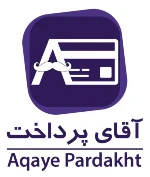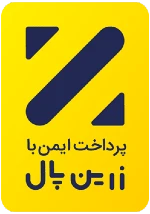دانلود پاورپوینت سیستم های پرس و جو زبان طبیعی در وب معنایی
نوع فایل: power point
قابل ویرایش: 26 اسلاید
قسمتی از اسلایدها:
•سیستم های مبتنی بر الگو
–این سیستم ها سعی دارند تا الگوهای قطعی که در پرس و جو کاربر تکرار می شوند را شناسایی کنند . این الگوها برای تفسیر طبیعت و ماهیت درخواست بازیابی اطلاعات که به صورت ضمنی در پرس و جو وجود دارد به کار می رود.
–Querix
•سیستم های پرس و جو زبان طبیعی کامل
–این سیستم ها هیچگونه ساختار گرامری برای زبان که پرسش و جملات درخواست های بازیابی اطلاعات به کار می رود ، تحمیل نمی کنند . در عوض از تکنیکهای پردازش زبان طبیعی پیچیده برای تجزیه ، تفسیر و ترجمه ورودی به زبان پرس و جو سازگار با وب معنایی استفاده می کنند.
–PANTO
•سیستم های زبان طبیعی کنترل شده
–این سیستم ها بر زبان طبیعی کنترل شده تکیه دارند، هدف این است که با محدود کردن ورودی های کاربر به یک زیرمجموعه بدون ابهام از درخواست های پرس و جوی امکان پذیر ، یک پردازش گر پرس و جو زبان طبیعی بتواند پرس و جو های کاربر را تفسیر کند و آن را به پرس و جو فرمال معادل معنایی تبدیل کند.
–CNL خاص (SWAT که از ACE استفاده می کند)
–هدایتگر (Ginseng)
فهرست مطالب و اسلایدها:
•مقدمه
•رابط های پرس و جو زبان طبیعی در وب معنایی
•بررسی قابلیت استفاده رابط های پرس و جو زبان طبیعی
منابع و مواخذ:
§[Ber2005a] A. Bernstein, E. Kaufmann, C. Kaiser, “Querying the semantic web with ginseng:A guided input natural language search engine”, In: 15th Workshop on Information Technologies and Systems, Las Vegas, NV, 2005, pp. 112–126.
§[Ber2005b] A. Bernstein, E. Kaufmann, A. Göhring, C. Kiefer, “Querying Ontologies: A Controlled English Interface for End-users”, The Semantic Web – ISWC, Lecture Notes in Computer Science Volume 3729, 2005, pp. 112-126.
§[Col1999] M. Collins, “Head-driven Statistical Models for Natural Language Parsing”, PhD thesis, University of Pennsylvania, 1999.
§[Dam2008] D. Damljanovic, V. Tablan, K. Bontcheva, “A Text-based Query Interface to OWL Ontologies”,2008.
§[Dam2012] D. Damljanovic, M. Agatonovic, H. Cunningham, “FREyA: an Interactive Way of Querying Linked Data using Natural Language”, The Semantic Web: ESWC 2011 Workshops, Lecture Notes in Computer Science Volume 7117, 2012, pp. 125-138.
§[Faa2006] A. Faaborg, H. Lieberman, “A goal-oriented web browser”, In CHI '06: Proceedings of the SIGCHI conference on Human Factors in computing systems, New York, USA, 2006, pp. 751-760.
§[Fuc2003] M. Fuchs, C. Niederee, M. Hemmje, J. Neuhold, “Supporting model-based construction of semantic-enabled web applications”, In Proceedings of the Fourth International Conference on Web In formation Systems Engineering, WISE '03, pages 232, Washington, DC, USA, 2003.
§[Hac2012] G. Hachey, D. Gasevic, “Semantic Web User Interfaces: A Systematic Mapping Study and Review”, semantic-web-journal, 2012.
§[Har2009] O. Hartig, J. Zhao, “Using Web Data Provenance for Quality Assessment”, In:Proceedings of the First International Workshop on the Role of Semantic Web in Provenance Management (SWPM'09) at the International Semantic Web Conference (ISWC'09), Washington D.C., USA, 2009.
§[Kam1993] H. Kamp, U. Reyle, “From Discourse to Logic: Introduction to Modeltheoretic Semantics of Natural Language”, Kluwer, Dordrecht Boston London, 1993.
•[Kau2006] E. Kaufmann, A. Bernstein, R. Zumstein, “Querix: A natural language interface to query ontologies based on clarification dialogs”, In: 5th ISWC, Athens, GA, 2006, pp.980–981.
•[Kau2007a] E. Kaufmann, A. Bernstein, “How useful are natural language interfaces to the semantic web for casual end-users?”, In: Proceedings of the Forth European Semantic Web Conference (ESWC 2007), Innsbruck, Austria, 2007.
•[Kau2007b] E. Kaufmann, A. Bernstein, L. Fischer, “NLP_Reduce: A na¨ıve but domain-independent natural language interface for querying ontologies”, In: 4th ESWC,Innsbruck, 2007.
•[Kau2010] E. Kaufmann, A. Bernstein, “Evaluating the Usability of Natural Language Query Languages and Interfaces to Semantic Web Knowledge Bases”, Journal of Web Semantics: Science and Agents on the World Wide Web, 2010.
•[Lop2005] V. Lopez, M. Pasin, E. Motta, “AquaLog: An Ontology-Portable Question Answering System for the Semantic Web”, ESWC, LNCS 3532, pp. 546 – 562, 2005.
•[Lop2007] V. Lopez, E. Motta, M. Pasin, “Aqualog: An ontology-driven question answering system for organizational semantic intranets”, Web Semantics: Science,Services and Agents on the World Wide Web 5(2), 2007, pp. 72-105.
•[Lop2012] V. Lopez, M. Fernandez, E. Motta, N. Stieler, “PowerAqua: supporting users in querying and exploring the semantic web”, Semantic Web – Interoperability, Usability, Applicability, 3(3), 2012, pp. 249–265.
•[Sma2008] P. Smart, “Controlled Natural Languages and the Semantic Web”, School of Electronics and Computer Science University of Southampton, Southampton, SO17 1BJ, United Kingdom, 27th, 2008.
•[Tan2001] L.R. Tang, R.J. Mooney, “Using Multiple Clause Constructors in Inductive Logic Programming for Semantic Parsing”, 12th European Conference on Machine Learning, Freiburg, Germany, 2001, pp. 466-477.
•[Wan2007] C. Wang, M. Xiong, Q. Zhou, Y. Yu, “PANTO: A Portable Natural Language Interface to Ontologies”, The Semantic Web: Research and Applications, 2007.
نوع فایل: power point
قابل ویرایش: 26 اسلاید
قسمتی از اسلایدها:
•سیستم های مبتنی بر الگو
–این سیستم ها سعی دارند تا الگوهای قطعی که در پرس و جو کاربر تکرار می شوند را شناسایی کنند . این الگوها برای تفسیر طبیعت و ماهیت درخواست بازیابی اطلاعات که به صورت ضمنی در پرس و جو وجود دارد به کار می رود.
–Querix
•سیستم های پرس و جو زبان طبیعی کامل
–این سیستم ها هیچگونه ساختار گرامری برای زبان که پرسش و جملات درخواست های بازیابی اطلاعات به کار می رود ، تحمیل نمی کنند . در عوض از تکنیکهای پردازش زبان طبیعی پیچیده برای تجزیه ، تفسیر و ترجمه ورودی به زبان پرس و جو سازگار با وب معنایی استفاده می کنند.
–PANTO
•سیستم های زبان طبیعی کنترل شده
–این سیستم ها بر زبان طبیعی کنترل شده تکیه دارند، هدف این است که با محدود کردن ورودی های کاربر به یک زیرمجموعه بدون ابهام از درخواست های پرس و جوی امکان پذیر ، یک پردازش گر پرس و جو زبان طبیعی بتواند پرس و جو های کاربر را تفسیر کند و آن را به پرس و جو فرمال معادل معنایی تبدیل کند.
–CNL خاص (SWAT که از ACE استفاده می کند)
–هدایتگر (Ginseng)
فهرست مطالب و اسلایدها:
•مقدمه
•رابط های پرس و جو زبان طبیعی در وب معنایی
•بررسی قابلیت استفاده رابط های پرس و جو زبان طبیعی
منابع و مواخذ:
§[Ber2005a] A. Bernstein, E. Kaufmann, C. Kaiser, “Querying the semantic web with ginseng:A guided input natural language search engine”, In: 15th Workshop on Information Technologies and Systems, Las Vegas, NV, 2005, pp. 112–126.
§[Ber2005b] A. Bernstein, E. Kaufmann, A. Göhring, C. Kiefer, “Querying Ontologies: A Controlled English Interface for End-users”, The Semantic Web – ISWC, Lecture Notes in Computer Science Volume 3729, 2005, pp. 112-126.
§[Col1999] M. Collins, “Head-driven Statistical Models for Natural Language Parsing”, PhD thesis, University of Pennsylvania, 1999.
§[Dam2008] D. Damljanovic, V. Tablan, K. Bontcheva, “A Text-based Query Interface to OWL Ontologies”,2008.
§[Dam2012] D. Damljanovic, M. Agatonovic, H. Cunningham, “FREyA: an Interactive Way of Querying Linked Data using Natural Language”, The Semantic Web: ESWC 2011 Workshops, Lecture Notes in Computer Science Volume 7117, 2012, pp. 125-138.
§[Faa2006] A. Faaborg, H. Lieberman, “A goal-oriented web browser”, In CHI '06: Proceedings of the SIGCHI conference on Human Factors in computing systems, New York, USA, 2006, pp. 751-760.
§[Fuc2003] M. Fuchs, C. Niederee, M. Hemmje, J. Neuhold, “Supporting model-based construction of semantic-enabled web applications”, In Proceedings of the Fourth International Conference on Web In formation Systems Engineering, WISE '03, pages 232, Washington, DC, USA, 2003.
§[Hac2012] G. Hachey, D. Gasevic, “Semantic Web User Interfaces: A Systematic Mapping Study and Review”, semantic-web-journal, 2012.
§[Har2009] O. Hartig, J. Zhao, “Using Web Data Provenance for Quality Assessment”, In:Proceedings of the First International Workshop on the Role of Semantic Web in Provenance Management (SWPM'09) at the International Semantic Web Conference (ISWC'09), Washington D.C., USA, 2009.
§[Kam1993] H. Kamp, U. Reyle, “From Discourse to Logic: Introduction to Modeltheoretic Semantics of Natural Language”, Kluwer, Dordrecht Boston London, 1993.
•[Kau2006] E. Kaufmann, A. Bernstein, R. Zumstein, “Querix: A natural language interface to query ontologies based on clarification dialogs”, In: 5th ISWC, Athens, GA, 2006, pp.980–981.
•[Kau2007a] E. Kaufmann, A. Bernstein, “How useful are natural language interfaces to the semantic web for casual end-users?”, In: Proceedings of the Forth European Semantic Web Conference (ESWC 2007), Innsbruck, Austria, 2007.
•[Kau2007b] E. Kaufmann, A. Bernstein, L. Fischer, “NLP_Reduce: A na¨ıve but domain-independent natural language interface for querying ontologies”, In: 4th ESWC,Innsbruck, 2007.
•[Kau2010] E. Kaufmann, A. Bernstein, “Evaluating the Usability of Natural Language Query Languages and Interfaces to Semantic Web Knowledge Bases”, Journal of Web Semantics: Science and Agents on the World Wide Web, 2010.
•[Lop2005] V. Lopez, M. Pasin, E. Motta, “AquaLog: An Ontology-Portable Question Answering System for the Semantic Web”, ESWC, LNCS 3532, pp. 546 – 562, 2005.
•[Lop2007] V. Lopez, E. Motta, M. Pasin, “Aqualog: An ontology-driven question answering system for organizational semantic intranets”, Web Semantics: Science,Services and Agents on the World Wide Web 5(2), 2007, pp. 72-105.
•[Lop2012] V. Lopez, M. Fernandez, E. Motta, N. Stieler, “PowerAqua: supporting users in querying and exploring the semantic web”, Semantic Web – Interoperability, Usability, Applicability, 3(3), 2012, pp. 249–265.
•[Sma2008] P. Smart, “Controlled Natural Languages and the Semantic Web”, School of Electronics and Computer Science University of Southampton, Southampton, SO17 1BJ, United Kingdom, 27th, 2008.
•[Tan2001] L.R. Tang, R.J. Mooney, “Using Multiple Clause Constructors in Inductive Logic Programming for Semantic Parsing”, 12th European Conference on Machine Learning, Freiburg, Germany, 2001, pp. 466-477.
•[Wan2007] C. Wang, M. Xiong, Q. Zhou, Y. Yu, “PANTO: A Portable Natural Language Interface to Ontologies”, The Semantic Web: Research and Applications, 2007.



